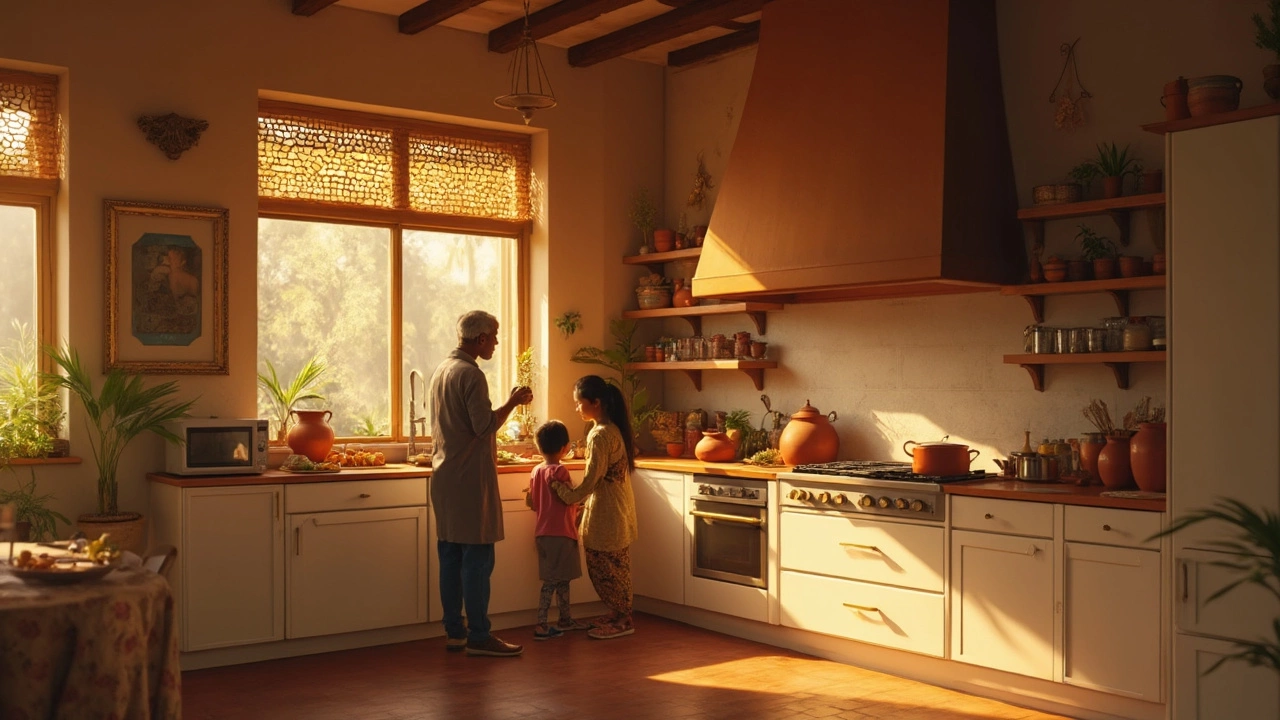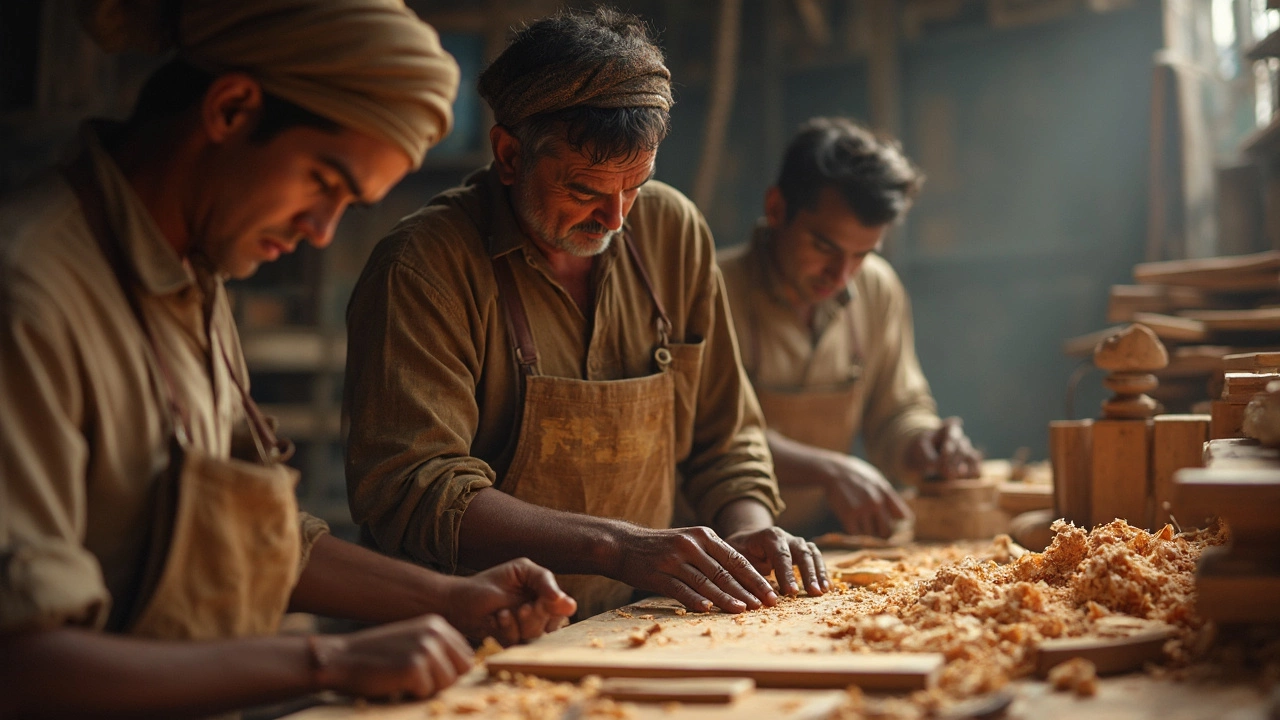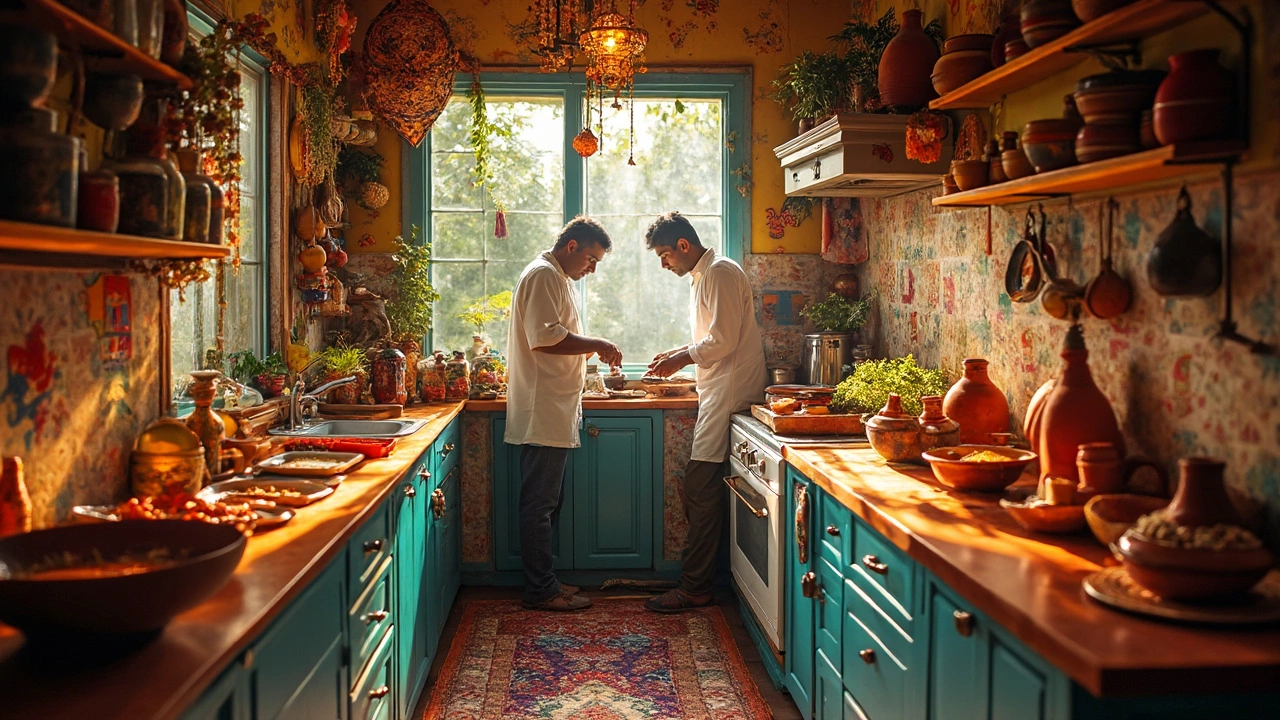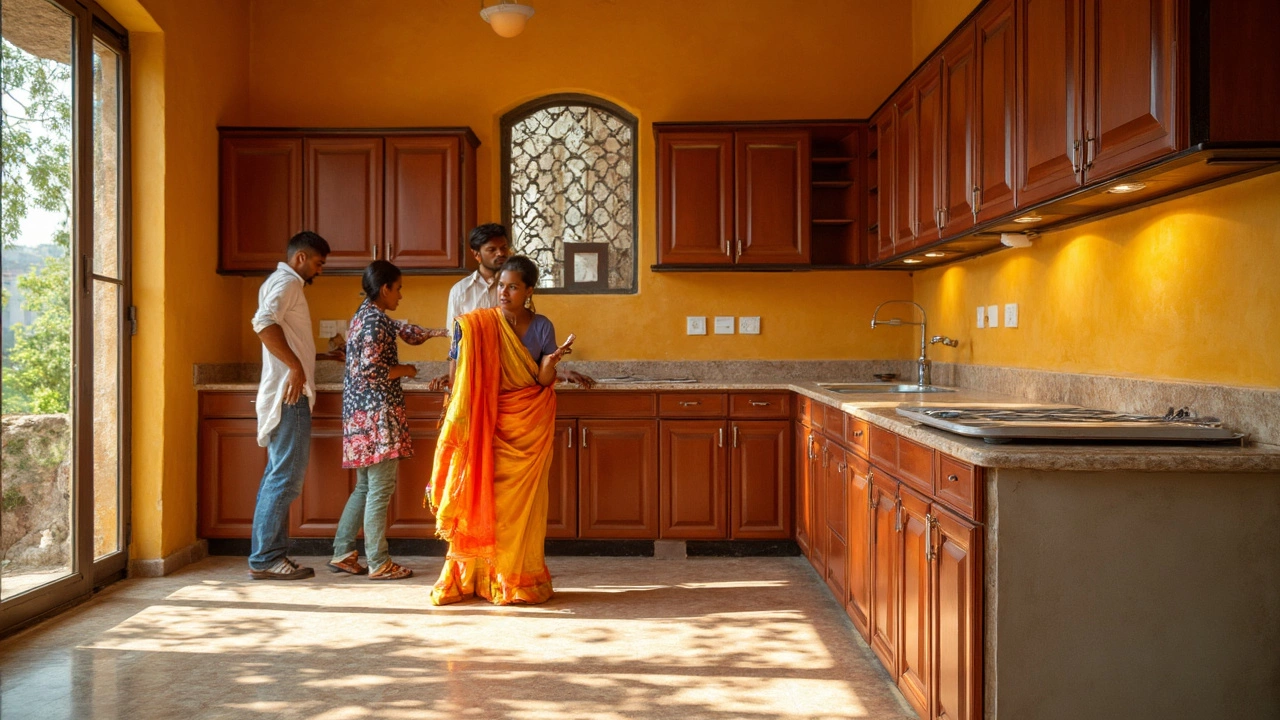Why Is Shaker Style So Expensive? The Real Reasons Behind the Price Tag

So you’ve jaw-dropped at a quote for Shaker cabinets and wondered, “Are they really worth it?” You’re not alone. The price can be a shock, especially when those clean doors seem so simple. But there’s more going on behind those straight lines than meets the eye.
Unlike mass-produced pressboard cabinets you’d grab at a big box store, original Shaker pieces are rooted in real craftsmanship. The Shakers, an actual religious group from the 18th century, believed in honest, functional furniture—nothing extra, no frills. But simplicity doesn’t always mean cheap. The devil’s in the details, and with each Shaker door, you’re paying for a ton of hidden hours, quality wood, and precise work. Curious where every dollar goes? Let’s pull open the drawer and break it down—no sawdust in your coffee, I promise.
- What Makes Shaker Style Unique?
- Materials: Going Beyond the Basics
- Craftsmanship and Labor Costs
- Supply, Demand, and Market Trends
- How to Save on Shaker Style
- Is It Worth the Investment?
What Makes Shaker Style Unique?
The thing about shaker style is that it’s the opposite of flashy. No loopy carvings or glitzy molding in sight—just clean, crisp lines and a panel that’s barely raised. But don’t let that fool you. The details are deceptively simple, and that’s why people love them. Shaker design stands out for its balance: not boring, not too loud.
Here’s what really sets it apart:
- Five-Piece Door: Shaker cabinets are basically a frame made up of four pieces with a flat center panel. It looks easy, but every join and seam has to be perfect for that “simple” look to hold up, especially when the light hits from an angle in your kitchen.
- Symmetry and Proportion: Authentic shaker style nails the proportions—a bit wider on the rails and stiles than basic flat doors, but not chunky. Designers and cabinet makers follow these old measurements pretty closely.
- No Extra Flourishes: No beading, arches, or routed edges—just that straight, honest look. It pays off if you want to avoid trends that get dated fast.
- Solid Wood: Shaker design usually means real, quality wood like maple, cherry, or oak, not just particle board with a plastic finish.
Fun fact: The style comes from the Shaker religious community, who were all about humility and practicality. That’s why every line and dimension in shaker style has purpose. There’s no wasted space or unnecessary flair—everything you see is there for a reason, and that’s exactly what pulls people in, even a couple centuries after the first Shaker cabinets showed up in American homes.
Materials: Going Beyond the Basics
If you picture Shaker style cabinets as just some glued-together plywood, you’re missing half the story. Shaker design is all about top-notch materials, and that’s a big reason the price goes up. Most real-deal Shaker cabinets use solid hardwood, like maple, cherry, or oak—not the cheaper particleboard or MDF you see in a lot of mass-produced kitchens. These woods don’t just look nice; they last decades, stand up to daily dings, and hold their shape without warping.
The classic Shaker look means those cabinet doors have a flat center panel with a sturdy frame around it. Building that with hardwood costs way more—straight up—than just slapping a veneer onto pressboard. Sometimes they’ll use plywood for the internal sides or shelves (it’s strong and lighter, so your cabinets don’t end up crazy heavy), but the faces—the parts you actually see—are nearly always solid wood if you’re paying the real Shaker price.
Here’s a quick snapshot to show just how much hardwood bumps up the cost versus basic materials:
| Material | Typical Cost (per linear foot) | Durability |
|---|---|---|
| Solid Maple (Shaker grade) | $90 - $140 | High |
| Plywood Veneer | $50 - $80 | Medium |
| MDF or Particleboard | $30 - $50 | Low |
Beyond that, real wood means you get those crisp Shaker lines without swelling or bubbling that can happen with cheaper stuff if your kitchen gets humid (which, if you cook, it always does). Plus, hardwood cabinets can be sanded down and refinished if you ever change your mind about color or they get scratched. Try that with particleboard—it’ll crumble like stale bread.
People sometimes think they can get the same kitchen design with a laminate lookalike, and yeah, maybe from a distance. But up close, it’s the difference between a hand-built table and a flat-pack you hammered together in an hour. Real Shaker cabinets feel solid, don’t slam when you close them, and have a natural grain that looks better as the years roll on. That’s where a big chunk of your money’s going.
Craftsmanship and Labor Costs
Here’s the thing—building shaker style cabinets isn’t just about cutting wood and slapping it together. The simple, classic look needs a level of accuracy and skill that cheaper cabinets just don’t get. That five-piece door? Every edge and joint has to line up perfectly. If there’s even the slightest gap, it sticks out like a sore thumb against those crisp lines. That’s why real Shaker-style work always costs more in labor—craftspeople have to take their time.
When you buy from a reputable shop, you’re usually paying for hand-assembled panels, tight-fitting joinery, and loads of sanding to get a silky finish. Flat-pack cabinets, meanwhile, often rely on staples and glue, while true Shaker uses time-tested techniques like mortise-and-tenon joints. Those are slow, but they're strong and last forever.
A lot of shops still use solid wood for the frames and doors. That’s a bear to work with compared to laminated particleboard. Just matching the wood grain can take as long as actually cutting the panels—especially if the customer wants custom matching or a rare type of wood.
| Labor Breakdown | Shaker Cabinets (Hours) | Standard Cabinets (Hours) |
|---|---|---|
| Cutting and prep | 6 | 4 |
| Assembly | 8 | 4 |
| Sanding and finishing | 5 | 2 |
Every step just takes longer because there’s less room for shortcuts. In some cases, almost half the price of custom shaker style cabinetry is pure labor. If you’re getting a local artisan or a specialty workshop, the price only climbs as you add more custom bits and finishes.
So when you’re comparing prices, remember that a big part of the cost is because you’re paying for someone’s time and skill—not just materials. The careful handwork is what makes those crisp lines possible and keeps the doors looking good for decades. It’s the stuff you don’t see, but definitely feel in your wallet and in the way your kitchen looks and works every day.

Supply, Demand, and Market Trends
If you’ve searched for shaker style cabinets lately, you’ve seen that prices aren’t coming down. And you’re not imagining things. In the past ten years, demand for shaker style kitchens has gone through the roof. A recent Houzz study found that nearly 60% of kitchen remodels in the US use shaker doors. That’s a lot of people wanting the same crisp, classic look—so prices naturally climb.
What really pumps up the cost? It isn’t just about everyone loving the style right now. The supply side is fighting its own battles. Solid wood and plywood imports jumped in price after the pandemic, and labor shortages in woodworking trades have only made things tougher. Cabinet shops end up paying more for both materials and skilled labor, and those costs trickle down to you.
Let’s look at how these different pieces add up:
- Material costs: The price for maple, oak, and other solid woods spiked by over 30% between 2020 and 2023. Even plywood got more expensive, thanks to shipping delays and increased demand for renovations.
- Labor shortages: Shops have a hard time finding experienced woodworkers. It takes more time to train new folks, so that extra labor cost gets baked into every cabinet order.
- Popularity tax: The more popular shaker style becomes, the less likely cabinetmakers are to offer discounts. Why lower prices when they can barely keep up with orders?
Want to see how prices changed? Here’s a quick snapshot from the cabinet market:
| Year | Average Cost per Linear Foot (USD) | Notes |
|---|---|---|
| 2019 | $220 | Stable pricing |
| 2022 | $265 | Post-pandemic materials spike |
| 2024 | $278 | High demand and labor shortage |
So if you’re budgeting for shaker style in your kitchen, just remember you’re up against two things: everyone wants it, and it’s getting harder to make. That simple charm comes with a supply-and-demand price tag you can’t ignore.
How to Save on Shaker Style
Love the shaker style look but not the price? You’re not out of luck. Here’s how you can bring those classic lines into your kitchen without emptying your wallet.
- Choose MDF over Solid Wood: Solid wood is the biggest cost driver in shaker style cabinets. Opting for medium-density fiberboard (MDF) or a mix of plywood and MDF for the cabinet doors can shave hundreds, even thousands, off your final bill. Plus, most folks can’t spot the difference once it’s painted.
- Go Ready-to-Assemble (RTA): Flat-pack or RTA Shaker units are a great budget hack. They’re mass-produced but still come with those iconic framed panels. You just have to put in a bit of elbow grease and assemble them, kind of like kitchen-sized Lego.
- Stick With Standard Sizes: Custom sizes mean custom prices. If your kitchen lets you use off-the-shelf cabinet boxes and doors in standard sizes, you’ll avoid the markup that comes with made-to-order units.
- Use Open Shelving: Swap some upper cabinets for open shelves in the same Shaker style. You’ll get the clean look for less—it’s less material and less labor. Just keep in mind that everything on those shelves is out in the open, dust and all.
- Paint Instead of Replace: Sometimes your old cabinets just need a facelift. If your boxes are sturdy, you can replace just the cabinet doors with new shaker style ones, or even add trim to your old doors and paint them. This is hands-down the cheapest way to get a Shaker vibe.
Here’s how some of the savings stack up if you compare different choices for a small kitchen redo:
| Option | Average Cost (10x10 Kitchen) |
|---|---|
| Solid Wood Custom Shaker | $10,000 - $15,000 |
| MDF Shaker RTA | $4,000 - $6,000 |
| Door Replacement Only | $1,500 - $3,000 |
If you’re shopping sales, keep your eye on the big-box stores—sometimes, you get lucky with overstocked Shaker door styles going for up to 30% off. Watch out for local woodshops too; some will offer factory seconds at steep discounts.
The bottom line: you can capture the essence of shaker style without blowing your renovation budget. Trim what you can, DIY where possible, and shop smart. Your kitchen will still look timeless—nobody needs to see your receipts.
Is It Worth the Investment?
If you’re tightening your budget, it’s fair to ask if those shaker style cabinets live up to their price tag. Here’s the thing: in the world of kitchen design, Shaker cabinets almost never go out of style. They’ve stuck around for over 200 years, and real estate agents often point out kitchens with Shaker doors when selling a home because buyers recognize and trust that look.
Quality is another big reason for the investment. Basic cabinets from chain stores usually use particle board or MDF that won’t survive much abuse. By contrast, true Shaker style uses solid wood or premium plywood, and the assembly focuses on durability, not shortcuts. That means fewer headaches down the line—no sagging shelves, drawers that actually open smoothly, and repairs you can handle yourself, not call a contractor for. Luna, my cat, has jumped on every cabinet in my kitchen, and the Shaker doors haven’t budged.
The resale value is real. Remodels with Shaker cabinetry typically see a better return than trendier styles that fade fast. According to a 2024 report from Home Improvement Insights, homes with classic Shaker cabinets commanded an average 8% higher selling price compared to homes with basic slab-front cabinets. Here’s that stat laid out:
| Cabinet Style | Average Increase in Home Sale Price |
|---|---|
| Shaker | +8% |
| Stock (Slab) | +2% |
If you like changing your kitchen style every few years, Shaker cabinets work with everything—from modern handles to farmhouse pulls. You won’t feel locked in or pressured to redo everything just because your tastes change or trends shift. So, while those upfront costs sting, a lot of folks decide it’s money well spent when you factor in durability, everyday function, and the payoff if you ever move.
Bottom line: if what matters is strong materials, a timeless look, and real value for your home, shaker style cabinets are tough to beat. If you just need basic storage for a short-term place, the splurge probably isn’t worth it. But if this is your forever kitchen or a space you want to enjoy for years, the investment makes sense.

